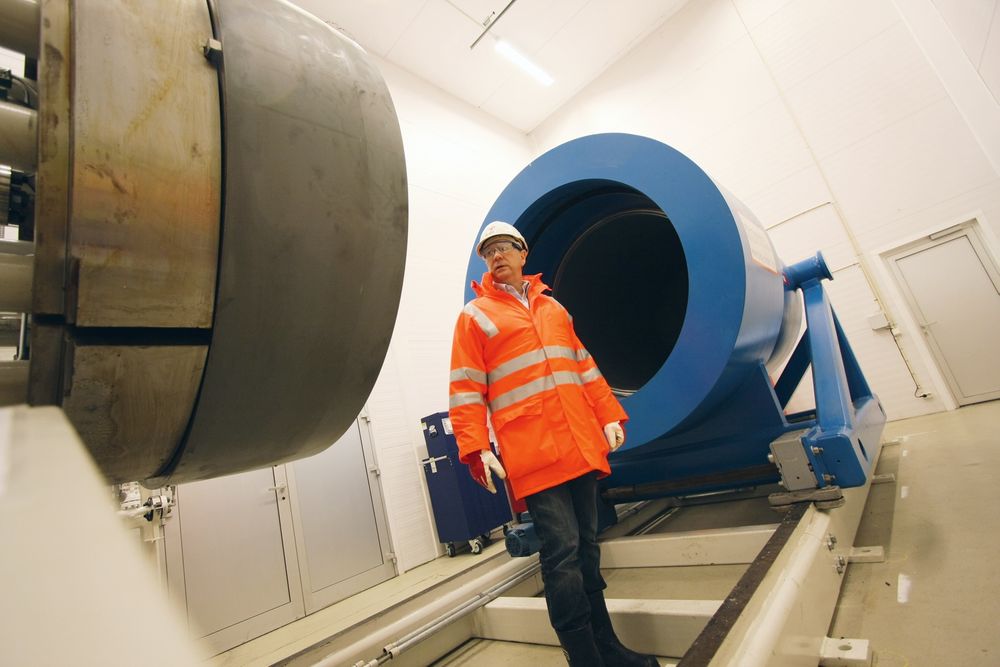This summer, Statoil and Technip specialists managed to weld a new tie-in point onto a live gas pipeline in water depths divers could only dream of reaching. The technology, developed by a relatively small community at Killingøy has received global attention.
“Statoil is the only actor in the world able to perform a remote hot-tap. The operations at Åsgard this summer were an important technological milestone for us”, says Statoil’s PRS director, Jan Olav Berge.
Multiple world records broken
The hot-tap operation at Åsgard is but one of the world records broken by the subsea engineers just outside Haugesund.


Berge tells us that, already in 1984, research projects were well underway for the so-called hyperbaric welding in connection with the Oseberg development. Since then, Statoil, and their partners in Pipeline Repair System (PRS) at Killingøy just outside Haugesund, have regularly broken new records in deep water.
“We need to be proactive and think ahead to the next 10 to 20 years. This is why we are regularly coming up with new solutions. Recently we have produced a new pressure chamber which we can use to test welding and equipment for water depths of up to 4000 metres. This is globally unprecedented. The pressure chamber is our first step towards fulfilling our vision to be able to perform repairs on pipelines under several thousand metres of water,” Berge said.
Enormous pressure
He stands in front of a completely blue cylinder with steel walls close to 30 centimetres thick which can withstand the pressure of an amazing 400 bar. This matches the pressure created by the weight of a four kilometre tall water gauge.
Most of the equipment at Statoil’s pipeline repair centre possesses incredible dimensions. The most recent member is North Stram, who has laid pipelines for the transportation of natural gas from Russia to Europe.
Since Nord Stream has pipe dimensions of up to 48 inches, the equipment used to connect the pipes had to undergo a complete rebuild.
“This is where the divers who welded the piplines at Nord Stream worked,” Berge explains.
He takes us into a steel chamber with pincers that could easily do a number on a medium-sized family car. The chamber is a so-called habitat that is put into place over a pipeline. It is drained of water by forcing in helium with oxygen. Thereafter, the divers enter in order to prepare their equipment before the actual welding may begin.
“This was not a particularly complicated job for us, but we had no equipment suitable for these kinds of vast dimensions. Therefore, we had to make some modifications,” he said.
Technicians and inventors
The PRS base started as a contingency base in 1987 in order to be able to repair pipe damage on the ocean floor. Then, the organisation had a contingency responsibility of 1000 kilometre pipes for gas and oil pipes. Whilst today’s area of responsibility has expanded to 14,300 kilometre long pipes.
It was smooth sailing for the first 13 years where nothing required repairs, but the last 10 years has seen a whole array of operations. It was the technology community at Killingøy that stood behind the replacement of the damaged gas pipeline after the Kvitebjørn platform in 2008.
The pipe was dealt huge damages by an out of control anchor. The whole 26-metre pipe had to be chopped and replaced by the use of robots.
The fundamental role of the PRS is pipeline repairs, but more responsibilities have been thrust upon them including maintenance of equipment and organisation of the crew.
“We have engaged in the development of technology ahead of planned interventions and operations on the ocean floor. This is necessary due to pipe dimensions, material usage and water depths are ever changing. At the same time we focus on keeping both the crew and equipment up-to-date by means of technology development,” Berge said.


Mars landing on the ocean floor
The pipeline community’s latest technology milestone, the hot tap operation at Åsgard, was nominated as the Engineer Feat of 2012 by Teknisk Ukeblad.
“For a subsea engineer, this can be compared to landing on Mars,” said Kjell Edvard Apeland, project leader, after the operation was completed.
The connection point was welded onto Åsgard’s B platform’s production pipe at a water depth of 265 metres. In simple terms, a hot tap operation involves a robot welding a T-piece onto the pipe whilst gas is flowing through it.
When that is done, a remote controlled drill will drill a hole into the production pipe whilst pressure and production in the pipe remains unaffected. Work on developing this technology started in 1999.
This operation is considered as the first step in the project that walked away with the title Engineer Feat of 2012: Åsgard subsea compression.


